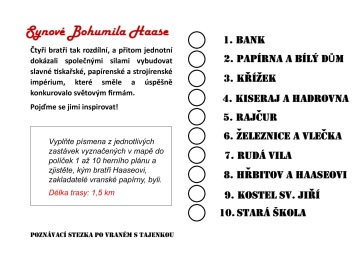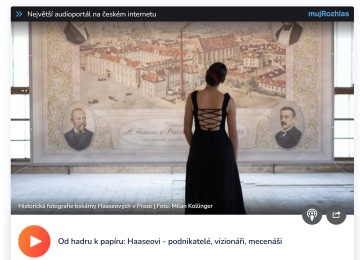Výstava OD HADRU K PAPÍRU ve vranské papírně je za námi. Aktuálně putuje dál po různých koutech republiky a může přijet i k vám! Kontaktujte náš spolek Stará škola pro více informací.
Proč stála vranská výstava za vidění?
Ta výstava je jako kniha. Nabitá informacemi a jedno přečtení rozhodně nestačí.
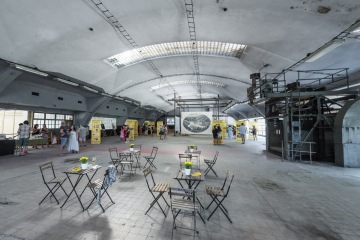
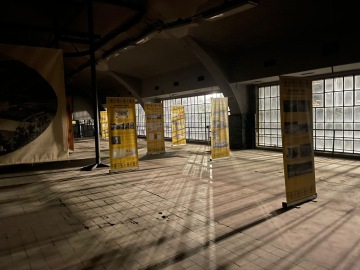


Český rozhlas Region přijel na výstavu natočit moc hezkou Reportáž
Co všechno proběhlo?
- neděle 10. 9. 2023 od 16h slavnostní vernisáž výstavy s bohatým doprovodným programem a výtvarným workshopem na téma "papír"
- 16 výstavních panelů o rodině Haaseových, velkoformátové obrazy a fotografie
- promítání videosnímků a starých fotografií papírny (po celou dobu výstavy)
- fotografie z dob méně dávných (po celou dobu výstavy)
- výstava prací dětí ze ZŠ Vrané nad Vltavou (po celou dobu výstavy)
- tvořivý koutek pro děti (po celou dobu výstavy) "Namaluj Ludvíka Haaseho" a "Navrhni si bankovku"
- neděle 24. 9. 2023 od 16h beseda "Angolský deník: 111 dní v zajetí", přímý účastník Petr Kocián přiblížil největší únos Česchoslováků v dějinách. Do Angoly jeli v roce 1983 celá rodina na pracovní pobyt otce Iva, který byl vyslán vranskou papírnou jako papírenský specialista.
- nedělě 1. 10. 2023 Den architektury - komentované prohlídky areálu papírny s bývalými zaměstnanci
- sobota 7. 10. 2023 od 14h Komentovaná prohlídka výstavy se Soňou Hrdličkovou Krásovou
- neděle 15. 10. 2023 od 16h Co se nevešlo na výstavu - besedu s mnoha zajímavostmi o rodině Haaseových a vranské papírně vedla Soňa Hrdličková Krásová.
- neděle 29. 10. 2023 od 16h slavnostní dernisáž výstavy s doprovodným programem


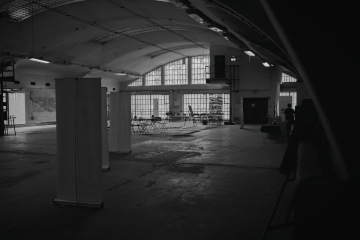
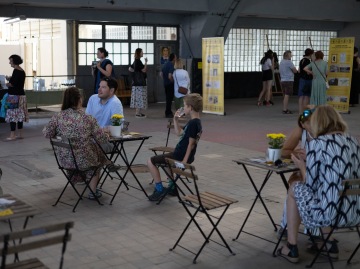


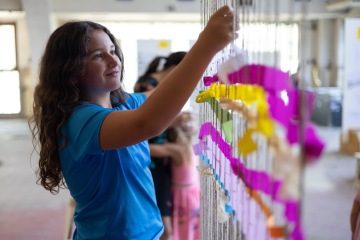
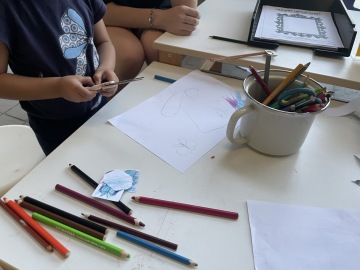
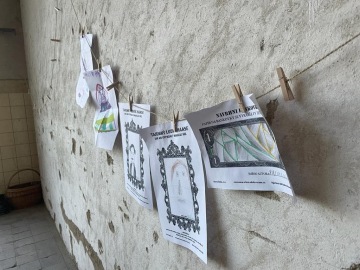
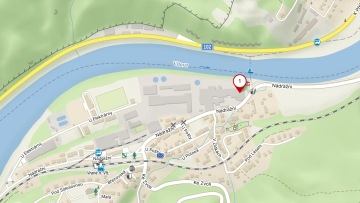
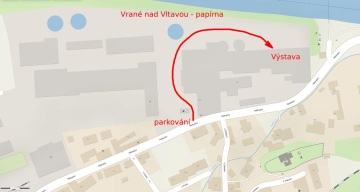
Co jsme podnikli už předtím?
Začalo to historickým seriálem a později i knihou Střípky z historie Vraného nad Vltavou a okolí. Jedna z kapitol byla věnována rodině Haaseových a čím více jsme se o nich později dozvídali, tím více nám docházelo, jak jsou nedocenení a nespravedlivě zapomenutí. A tak jsme posunuli myšlenky k činům.
11. června 2023 jsme ve spolupráci s Maticí českou instalovali a slavnostně odhalili informační panel "Strojní papírna synů Bohumila Haase" před budovou bývalé papírny.
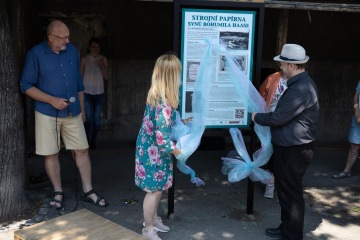

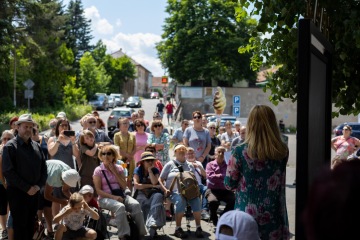

Bylo to moc milé a nabité nedělní odpoledne! Děkujeme všem za návštěvu a za pomoc. Panel a akci finančně podpořila MAS Dolnobřežansko a Středočeský kraj. Rám panelu vyrobila dílna bratrů Polákových KOVOPO, kterou najdete v papírně.
Součástí odpoledne byla také komentovaná prohlídka areálu papírny, kterým nás provedl Petr Novotný, bývalý zaměstnanec a studnice zajímavých informací. Při podzimní výstavě "Od hadru k papíru" bývalí zaměstnanci papírny v rámci Dne architekury provedli dalších víc než 100 zájemců.

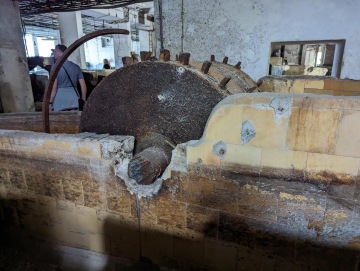
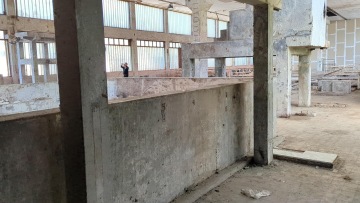

V čem byli Haaseovi tak významní?
Kromě toho, že založili v roce 1837 místní papírnu a postarali se tak o mimořádný rozvoj obce, podporovali místní školu a kulturu, stavěli domy pro své zaměstnance, přispívali na dobročinné aktivity i na opravu kostela. Majitel papírny Arnošt Haase byl zvolen také starostou obce. Haaseovi měli také v Praze v Anenském dvoře velkou tiskárnu a významnou litografickou dílnu, kde se tiskly špičkově graficky zpracované knihy, učebnice pro obecné a měšťanské školy. Spolupracovali s takovými umělci jako byl Gustav Klimt nebo Luděk Marold. Hráli rovněž zásadní roli při vzniku samostatné československé měny, kdy nejprve tiskli kolky pro oddělení československých bankovek a poté jako jedna ze čtyř tiskáren státovky nově vzniklé republiky. Cílem naší plánované výstavy je proto vrátit tuto rodinu, o které se po roce 1948 přestalo mluvit nebo se o ní mluvilo jen v negativních konotacích jakožto o vykořisťovatelích a Němcích, do obecného povědomí.
Anglická verze obsahu informačního panelu "Strojní papírna synů Bohumila Haase", který je natrvalo umístěn před budovou bývalé papírny:
THE SONS OF BOHUMIL HAASE MACHINERY PAPER MILL
23/07/1837 foundation stone laid
Founded by the sons of the Czech estate printer Bohumil Haase, originally to produce paper for their printing house in Prague, later the sought-after cigarette paper. In 1853–1855, the privileged national factory for state banknotes of the Austrian Empire.
Printing house in Prague...
The founder of the family, Bohumil Haase, came from Halberstadt (Germany) to Prague in 1795 and started working as a typesetter at Jeřábek's book printing house. He soon became independent, bought the house called At Half a Gold Star on the Old Town square and set up his own printing house in it. Although originally German, he quickly became close to the Czech environment. Revivalists such as writers Josef Dobrovský, Václav Hanka and Jan Nepomuk Štěpánek became his close collaborators. In 1804, he received the hereditary title of Czech estate printer, later the title of court printer. He founded the first lithographic printing house in Bohemia, a bookstore, a book rental shop, a lithographic workshop, but above all a calligraphy workshop. Through his activities, he significantly contributed to the stabilization of the written Czech language and to the spread of translations from European literature. He was the first in Bohemia to publish collections of original Czech writings.
His death in 1824 caught his sons very young: Ludvík (23), Ondřej (20), Bohumil (15) and Rudolf (13). They renamed the company THE SONS OF BOHUMIL HAASE and continued, following their father´s example, in supporting Czech writing. It was in their printing house that the first publication of educational organization called the Matice česká (Society of the National Museum) was printed. They continued to expand the company. First, they auctioned off Schönfeld´s privilege to Prague newspaper and equipped the printer with a double speed press. Then they bought complex of buildings called the Anne´s yard near the Charles Bridge and moved it there. Their activities
culminated in the establishment of the first electroplating and copper engraving workshop in Bohemia and the modernization of the font line. Even at the beginning of the 19th century, the book printing industry was in a very bad state due to insufficient equipment, strict censorship, and lack of orders. The modernized typeface of the Haase brothers, whose typeface not only Czech writers longed for, meant considerable progress for the Czech printing industry.
... paper mill in Vrané
The expansion of the printer resulted in the decision to start producing our own paper. In the spring of 1837, they bought the mill, on 7/23 they ceremoniously laid the foundation stone in its place, and already at the end of the year they started operations. THE SONS OF BOHUMIL HAASE paper mill was the third paper mill in Bohemia that did not produce paper by hand, but by machine, and soon became the largest and most modern paper mill in Bohemia and Moravia. As one of the first in Austria, it was equipped with machines to produce writing and printing paper of the English company "Bryan & Donkin", invented at the beginning of the 19th century. Ludvík Haase became the director. Thanks to his travels abroad, Vrane´s high-quality paper spread throughout the world. In 1847, the paper industry expert Prosper Piette was hired as technical director. He equipped the paper mill with
his own invention, a rotary rag cooker, thanks to which the production of paper was significantly accelerated. He established a machine shop, a foundry, and a boiler house. Not only many machines, but also inventions and innovations went out into the world from there. In 1845, the paper mill suffered devastating floods and in 1851, a fire. After restoration, the so-called Bank building was added in 1853, where the privileged national factory to produce Austrian banknotes operated at least until 1855.
Cigarette, banknote, and other high-quality papers
THE SONS OF BOHUMIL HAASE paper mill quickly gained world fame and its high-quality paper won many awards at domestic and foreign exhibitions. The main product and its specialty were cigarette paper, but it also produced the whitest silk or copy papers. Most went abroad, the largest export was to South America. In its heyday, paper from Vrané could be found literally on all continents, the paper mill produced up to one hundred and twenty-four types.
The Haases and Vrané
The Haases were responsible for the unprecedented development of Vrané. Their paper mill provided work to many people from the area immediately after its opening. They built four interconnected two-story apartment buildings (the so-called Rajčur), established a company sickness fund and a fund to support employees in old age. They lobbied for the construction of a railway, established a factory fire brigade, installed water supply to the paper mill, supported the local school and the poor. They contributed to the maintenance of the church of St. George and were instrumental in establishing a new cemetery.
Prepared by: Ing. Soňa Hrdličková Krásová
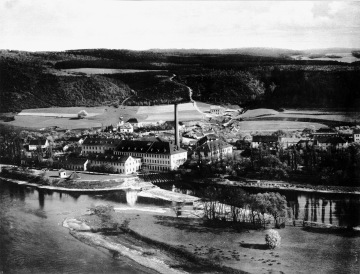



Po stopách rodiny Haase - Poznávací stezka po Vraném s tajenkou
Při slavnostním odhalování informačního panelu v červnu 2023 měli účastníci možnost projít si naživo poznávací stezku se zastaveními na místech, která jsou s rodinou Haase úzce spjatá. Vy ji teď můžete absolvovat takto virtuálně:

